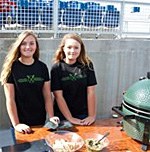Flavors of a Spanish Christmas
In Spain, when Christmas arrives, it is time to spoil yourself and enjoy meals with family and friends. Spanish gastronomy is varied and delicious, and ideal to give way to temptation at this time of year. Don’t miss out – the Christmas delights you will have the chance to try make any moment a party for the palate.
You will have no shortage of opportunities. Dinner on Christmas Eve and New Year’s Eve, lunch on Christmas Day and New Year’s Day, along with 6 January, feast of the Epiphany, are the most essential dates. However, throughout the month of December, bars, restaurants and hotels are decked out for the festive season. Their tables are decorated with candles, bows and Christmas motifs, and they offer special menus and delicious dishes. The reason is that this time of year is also popular for get-togethers between friends, family and work colleagues. This is why it is vital to book in advance.
Christmas meals are usually copious. They tend to start with a selection of starters and appetizers, either hot or cold. Then come the first course, the second course, and, of course, dessert. You will be able to try a bit of everything: shellfish, fish, meat, roast meat, soups, Iberian cured meats… all prepared in an especially delicious way. At this time of year, some of the most popular foods include turkey, lamb, red cabbage, sea bream, oysters, elvers and ham. As the different dishes are served you will see how hard it is to resist. And to accompany them, good Spanish wines of course, both white and red. At the end of your meal, good wishes are toasted with a glass of cava sparkling wine or cider.
Sweets deserve a mention of their own, filling the table with colour when it is time for dessert. Made with almonds, honey, sugar, chocolate and fruit, amongst other ingredients, they are a real treat for those with a sweet tooth. There is a wide array on offer and each region has its own typical recipes. However, the real star at Christmas is surely “turrón”, with a flavor admired around the world. There are many different types of turrón, but you should be sure to try the Jijona variety – soft and sweet – and the Alicante type, which is hard and crunchy.
Other traditional desserts are marzipan, served in little “shapes”, “polvorones” (a crumbly shortbread) and “mantecados” (made with almonds and lard). Finally, on 6 January, day of the Three Kings (the Epiphany), children live all the excitement of receiving their presents, while grown-ups get to savor a delicious “Roscón de Reyes” (seasonal cake) with a cup of hot chocolate.
(Photo of nougat courtesy of Spain is Culture)


















